
Winner of 2023 Gerber Baby search is a rainbow baby: ‘Brought us immeasurable joy’
Gerber has announced the winner of its 13th annual Gerber Baby photo contest. On Wednesday (12 July), Madison “Maddie” Mendoza from Colorado was named “spokesbaby” for the American baby food company. Since 1928, the long-standing family brand has been known for its iconic “Gerber Baby” logo. At 10 months old, Maddie enjoys her baby music classes, swimming lessons, and hiking with her parents. Included in her photo submission was a throwback photo of Maddie’s mother, Crystal Mendoza, who bears a striking resemblance to her daughter, floppy ponytail and all. According to Gerber, Maddie is a “rainbow baby” – the name for a child born after a miscarriage, stillbirth, or loss of an infant. “Being a rainbow baby, Maddie has brought us immeasurable joy with every milestone, snuggle, and moment spent with her enriching our lives and making every day more meaningful and beautiful,” said Crystal. “We look forward to witnessing her grow into a kind, compassionate, strong, independent and worldly individual as we hope to be stationed overseas again to teach Maddie about all the different parts of the world.” The baby food company also shared Maddie’s inspiring background, both of her parents being from first-generation families from the Philippines. Crystal, Maddie’s mom, and her father, Jun, were high school sweethearts and have been together for 22 years. Her dad, who graduated from the US Air Force Academy, currently serves as a Lieutenant Colonel physician in the Air Force. While Jun has been serving the Air Force for 16 years, both of Maddie’s grandfathers also served in the US Navy after coming to America with very little. Her parents hope that their family legacy of “resilience and love” continues on with Maddie. “Gerber has always believed in the magic of babies, and Maddie’s story, filled with love, resilience, and adventure, embodies the spirit of generations of Gerber babies,” said Tarun Malkani, Gerber President and CEO, in a statement. “The throwback submission of Maddie and her mom brought a smile to the judges’ faces and perfectly captured the spirit of this year’s program. We’re excited to partner with Maddie and her family throughout the next year to highlight the full-circle journey from baby to parent.” As winner of the 2023 Gerber Baby photo contest, Maddie will be featured on Gerber’s social media channels and marketing campaigns throughout the year. Additionally, Maddie and her family received a $25,000 cash prize, a year’s worth of free Gerber baby food, and a new wardrobe provided by Gerber Childrenswear. According to ABC News, the family was also gifted an ezpz First Foods Set, a $500 Gerber Childrenswear gift card, a Mommy & Me luggage set from Beis Travel, and a Canon EOS R50 camera and lens kit. The company also matched Maddie’s cash prize with a $25,000 donation to charitable organisation March of Dimes, which is committed to ending preventable maternal and infant health risks and death. Read More Man says he was uninvited from pregnant sister’s wedding after criticising ‘ridiculous’ baby names British toddler has American accent after watching Ms Rachel videos: ‘Payback for Peppa Pig’ Pregnant woman sparks debate after repeatedly asking stranger to give her a seat
2023-07-13 06:19
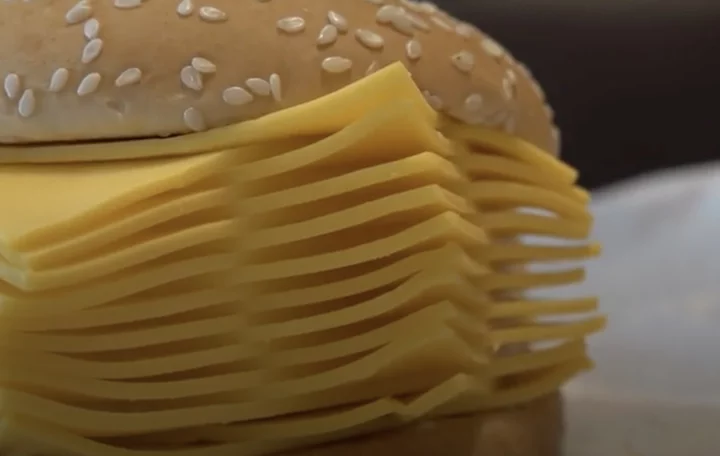
Burger King Thailand’s newest creation is just 20 slices of cheese between two buns
Burger King has confounded fast-food fans after unveiling its newest menu item, a burger-less cheeseburger that consists of a bun and 20 slices of American cheese. Earlier this week, Burger King Thailand shared a first look at the cheeseburger, which the fast-food chain has named the “real cheeseburger,” on social media. “Not for fun, this is for real!” a 9 July post on the official Burger King Thailand Facebook reads. The post also included a photo of the cheeseburger, which is piled high with melted cheese slices and nothing else. According to Burger King Thailand, the limited-edition menu item launched on Sunday and is available for a reduced price of 109 Thai baht ($3.14), compared to the usual price of 380 baht ($10.95) for a cheeseburger. In the comments of the Facebook post, the fast-food chain also informed customers that they can “order more cheese” to add to the burger for just 20 Thai baht if they are “not satisfied”. On social media, the cheese-focused burger has sparked both confusion and disgust among viewers, with many questioning why the fast-food chain would release the menu item. “I am, quite literally, gagging,” one person tweeted, while another said: “My stomach hurt just looking at this picture.” According to someone else, the cheeseburger is the “most degenerate food item [they’ve] ever seen”. “Taking Thailand off my bucket list,” another person joked in response to the latest Burger King menu item. As for why the burger exists in the first place, food blogger Richard Barrow, who tried the new cheeseburger himself, according to his Twitter, claimed the “trend” in Thailand is to “put cheese on literally everything”. “A trend in Thailand is to put cheese on literally everything. Now Burger King has joined in with the real cheeseburger. Though I think they forgot the meat,” Barrow tweeted alongside pictures of his own order of the cheese-packed burger. In the post, Barrow then revealed that he “struggled eating even half” of the burger, despite loving cheese. “I love cheese but I struggled eating even half of this ‘burger’. Maybe I should grill the other half? What do you think?” he wrote. Although the cheese on the cheeseburger appears to be melted slightly in Burger King Thailand’s advertisement for the menu item, Barrow’s photos show 20 slices of non-melted cheese stacked neatly inside a sesame bun. As for whether the cheeseburger comes with anything apart from cheese, such as condiments, Barrow confirmed in response to one curious viewer that it’s “just cheese”. While the majority of reactions to the Burger King cheeseburger were negative, there were some who admitted they were intrigued by the fast food item. “I NEED,” one person tweeted, while another said: “I would 100 per cent eat this.” In a statement to The Independent, a spokesperson for Burger King confirmed the cheeseburger, which will only be available until 13 July, “will not be featured in any Burger King location outside of Thailand”. Read More McDonald’s unveils major change to its most iconic burger What diet drinks don’t have aspartame in them? McDonald’s increases price of five menu items Burger King launches ‘real cheeseburger’ stuffed with 20 slices of cheese Google Doodle celebrates pani puri, the much-loved Indian street snack Nigella says extravagant dinner parties are a thing of the past. I wish she was wrong
2023-07-13 05:22

Prue Leith says the state must ‘sometimes’ step in to tackle child obesity
Prue Leith has said that the state “sometimes” needs to step in to deal with child obesity, after a report claimed that every UK government in the last 30 years has feared being labelled a “nanny state”. The Great British Bake Off judge said politicians must make a “really massive effort” to address issues that contribute to obesity and give people practical lessons and skills. Speaking at a hearing of The Times Health Commission, she said: “Sometimes the state has to be a nanny. We don’t mind the fact that the nanny state insists we go to school to learn maths. “So the nanny state who has to pay enormous sums of money to rectify the problem of obesity has every right to want the nation to learn to like good food and to learn about nutrition.” The Times Health Commission is a year-long inquiry set up to consider the future of health and social care in England. Leith continued at the hearing: “The long and short of getting people to eat healthy food is that if they don’t like it, they won’t do it. Even if they do it for a week they won’t do it for longer. So the only way to tackle it, I think is to get them to like it.” The South African chef cited cooking lessons as an effective way of helping people to learn how to eat healthier. “I think government after government have played around with this at the edges, there has been a little bit of enthusiasm and then it’s dropped again. It just has to be a really massive effort,” she added. Leith also believed there not “any point in lecturing everybody” about nutrition and said: “The poorest person in the country knows that vegetables are better for them than chocolate bars. But the knowledge isn’t enough. “So people who just say, ‘education, education’, yes, education is important. But the main thing is physical. Getting to like it,” she said. Leith’s comments come after the Institute for Government (IfG) published a report in April that claimed “fear of ‘nanny statism’” has resulted in politicians being “afraid of interfering in people’s choices, especially their diets”. Dr Dolly Theis, an expert in obesity policy at the University of Cambridge, told the Guardian: “Some governments have done much more than others. But the IfG is right that a general desire to avoid accusations of nanny statism, a lack of understanding about the issue, and a lack of political prioritisation have all contributed to this chronic policy failure.” This week, the government said in a new report that the link between the “higher consumption of ultra-processed foods and adverse health outcomes are concerning”, but did not recommend that a new labelling system be put in place to inform consumers of the risks. The report stopped short in spite of MPs suggesting in parliament that health warnings should be considered on packaging for “highly addictive” ultra-processed foods. In a previous statement, the Department for Health and Social Care said: “We are taking firm action to help people live healthier lives, including introducing restrictions on where unhealthy food is placed in supermarkets, calorie labelling on menus, and we work closely with industry to make it easier for people to make healthy food choices. “Trials of new obesity treatments and technologies are being backed by £20m of government funding, and we will introduce restrictions banning adverts on TV for foods and drinks high in fat, salt or sugar before 9pm, as well as paid-for adverts online.” Read More Nigella says extravagant dinner parties are a thing of the past – I wish she was wrong From Queen Camilla to Mary Berry: Who is in the Royal Box on the 10th day of Wimbledon? What are pani puri? The much-loved Indian street snack known by different names across the country Jennette McCurdy says her mother would ‘measure her thighs’ when she was 11 Children say ‘I’m bored’ 7 times a week – 7 ways to prevent it What are weight loss injections and what’s the controversy?
2023-07-13 00:23

Jennette McCurdy says her mother would ‘measure her thighs’ and ‘weigh her daily’ when she was 11
Jennette McCurdy has detailed how her mother encouraged her to engage in disordered eating when she was 11 years old. The former Nickelodeon star, 31, previously said that her mother, Debra McCurdy, “explicitly” told her how to eat in a way that would delay puberty so that she could continue to land child roles and therefore support her family financially. In a new interview with Louis Theroux on his podcast, The Louis Theroux Podcast, the iCarly actor opened up about exactly what her mother would do to promote disordered eating. “We partnered up to count our calories, she weighed me daily, she measured my thighs with a measuring tape, she taught me what diuretics were and we read calorie books together,” she recalled. McCurdy said that, to her 11-year-old self, it “felt amazing” to be “partners in crime” with her mother, and Debra told her that it was a “secret we shouldn’t tell anyone”. “I thought that was great because it was like a secret code language, nobody else knows what we’re doing, we could nod to each other and know that we were in this together, and nobody would be part of this.” However, Debra’s tactics to keep her daughter’s calories under control led to an “arduous relationship with food” for McCurdy. McCurdy explained that she began acting when she was six years old and began booking more significant roles when she was 11. She recalled playing characters that were younger than her actual age because she looked younger, and how her mother “made it clear that that was really helpful because casting directors like to cast older kids to play younger roles”. The actor said that one day, she felt a “lump” on her chest area and went to her mother out of fear that it was cancer. Debra has been diagnosed with breast cancer when McCurdy was two years old and later recovered. “I always had this fear of cancer recurring for her, cancer for me… it was just a constant fear,” she explained. “She reached her hand up my shirt, felt the lump and said, ‘Oh, Netty, no, you don’t have cancer, you’re just getting boobies.’ “That was truly as horrifying to me because it meant growing up and it had always been really clear to me that my mum did not want me to grow up. Not just for acting, but it also felt like her worth was tied up in me being young. With me being young, she had something to do, she felt good, me growing up kind of felt like her loss of purpose.” McCurdy asked Debra what she could do to “stop” her breasts from growing, which is when she introduced her daughter to calorie restriction. Speaking about her mother’s own eating disorder, which she had had “for years”, McCurdy recalled that Debra began restricting her food intake at the age of 14 by eating “one donut a day”. “The idea that this was abuse, that this was unhealthy, I couldn’t go anywhere near the reality of it,” she said. “I kept clinging to, ‘Oh, mum’s doing this because it’s what’s best for me, it’s what’s best for my career, she clearly wants what’s good for me,’ and I think a part of her believed that she wanted me to have a better life than she had, but I don’t think she ever stopped to consider what that actually meant, what does that look like, what does my daughter want. “She just assumed that her dreams must be everyone’s dreams, because of narcissism, I guess.” In her 2022 memoir, I’m Glad My Mother Died, McCurdy opened up about the abusive childhood she endured at the hands of Debra, who died in 2013 after her breast cancer returned. During her interview with Theroux, she also revealed that her mother would shower her until she was “17 or 18” and would give her “breast and vaginal exams”. “She would give me breast or vaginal exams in the shower and said that she was checking for lumps – she was just checking for cancer,” she recalled. But when McCurdy voiced how “uncomfortable” the experiences were, her mother became “hysterical”. McCurdy grew up in California with Debra, her father Mark McCurdy, and her three older brothers, Dustin, Marcus and Scott. Her best-selling memoir led to a two-book deal with Penguin Random House’s Ballantine Books label. For anyone struggling with the issues raised in this piece, eating disorder charity Beat’s helpline is available 365 days a year on 0808 801 0677. NCFED offers information, resources and counselling for those suffering from eating disorders, as well as their support networks. Visit eating-disorders.org.uk or call 0845 838 2040. Read More Nigella says extravagant dinner parties are a thing of the past – I wish she was wrong From Queen Camilla to Mary Berry: Who is in the Royal Box on the 10th day of Wimbledon? Kevin Costner ‘ordered to pay estranged wife $129k in monthly child support’, double his offer Children say ‘I’m bored’ 7 times a week – 7 ways to prevent it What are weight loss injections and what’s the controversy? What is group B strep? Charity says pregnant women ‘in the dark’
2023-07-12 22:59
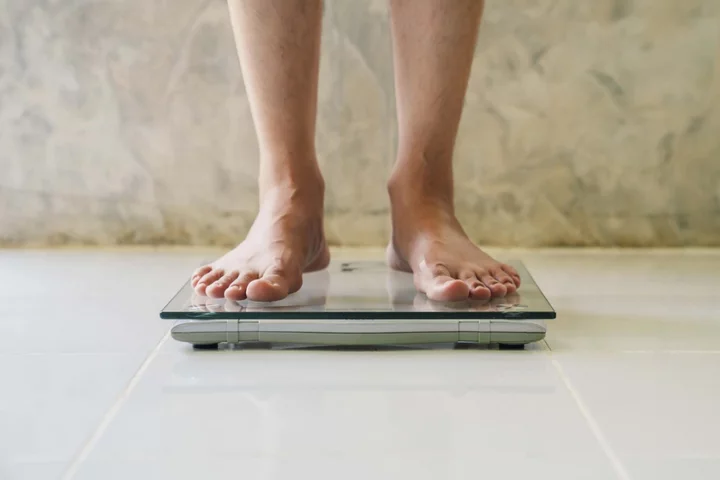
What are weight loss injections and what’s the controversy?
With new research emerging, more questions have been raised about weight-loss injections, how they work, and the risks involved. Here are some of your questions answered. What are weight loss injections? Championed by some celebrities, including Elon Musk, weight loss injections were originally created to treat people with type 2 diabetes and other weight-related health issues. They are a type of prescription-based medical treatment that interferes with your metabolism, regulates your appetite and as a result encourages weight loss. The drugs belong to a class of medications known as glucagon-like peptide-1 receptor agonists, or GLP-1 RAs, which mimic the GLP-1 hormone, released in the gut after eating some food. The only FDA-approved stomach injections to help with weight management are semaglutide — sold under the brand names Ozempic, Wegovy and Rybelsus — and liraglutide — sold under Saxenda. But others are in development. Helen Knight, programme director of the Centre for Health Technology Evaluation at the National Institute for Health and Care Excellence (Nice) said: “We know that management of overweight and obesity is one of the biggest challenges our health service is facing with nearly two-thirds of adults either overweight or obese. It is a lifelong condition that needs medical intervention, has psychological and physical effects, and can affect the quality of life. “But in recent years Nice has been able to recommend a new line of pharmaceutical treatments which have shown that those people using them, alongside changes to their diet and exercise, have been able to reduce their weight.” How do they work? According to Nice’s independent appraisal committee, drugs like semaglutide should only be prescribed to patients as an alternative for weight management — alongside a reduced-calorie diet and increased physical activity in adults. They should also have a BMI of at least 35.0 kg/m2 (this is medically classified as obese), and especially, to people with a BMI of 30.0 kg/m2 to 34.9 kg/m2, have non-diabetic hyperglycaemia (blood sugar that is above normal but below those needed to diagnose diabetes) or are at high risk of other weight-related conditions such as strokes and heart attacks, due to other factors such as high blood pressure and high cholesterol. Using semaglutide as an example, a typical dose for weight loss is 2.4 milligrams, administered weekly as under-the-skin self-injections. How are they going to be rolled out? Nice formally recommended liraglutide, orlistat and semaglutide as medicines suitable to use for weight loss earlier this year. And with such drugs also available through online pharmacies by private prescription, a growing number of people have tried the jabs. If they are prescribed alongside a reduced-calorie diet, increased physical activity, and behavioural support, after a year, people taking them can lose up to 15% of their body weight, with results visible within the first month, according to the Nice clinical trials. Some weight loss injections are available on the NHS, but they are only prescribed under certain circumstances. Following an announcement of a £40 million two-year pilot on June 7, the government have said more people living with obesity will have access to the newest and most effective obesity drugs to help cut NHS waiting lists. What are the possible side effects? Europe’s drug regulator The European Medicines Agency (EMA) is investigating whether patients using some weight loss and obesity jabs are at risk of suicidal thoughts and thoughts of self-harm, which highlights some of the controversy surrounding the phenomenon. The EMA safety committee said it is looking at cases among people who use a semaglutide or liraglutide-containing medicine for weight loss – where “signals” were raised by the Icelandic Medicines Agency. “A signal is information on a new or known adverse event that is potentially caused by a medicine and that warrants further investigation,” the EMA said. “The case reports included two cases of suicidal thoughts, one following the use of Saxenda and one after Ozempic. One additional case reported thoughts of self-injury with Saxenda. “The semaglutide-containing medicine Wegovy and the liraglutide-containing medicine Saxenda are authorised for weight loss, together with diet and physical activity. “Suicidal behaviour is not currently listed as a side-effect in the EU product information of these medicines.” If you have a history of medullary thyroid cancer, gallbladder disease, or even pancreatitis, you should avoid taking weight loss injections like semaglutide. People who do take the prescription drug for weight loss sometimes experience dizziness, fatigue, and gastrointestinal issues — the most common side effects among patients — such as diarrhoea, constipation and gassiness. They are also at risk of getting headaches and stomach conditions including vomiting, bloating and nausea. Read More Charity boss speaks out over ‘traumatic’ encounter with royal aide Ukraine war’s heaviest fight rages in east - follow live Journalist and author Yomi Adegoke on the real-life consequences of social media What is group B strep? Charity says pregnant women ‘in the dark’ Britney Spears: I worked my ass off to get my memoir written
2023-07-12 22:26
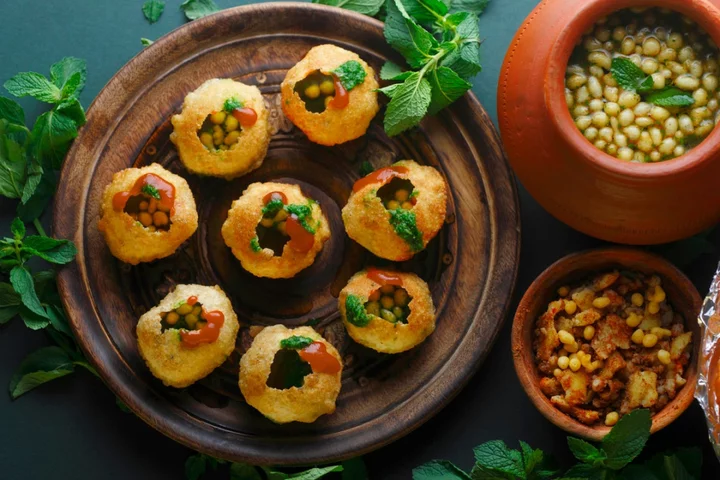
What are pani puri? The much-loved Indian street snack known by different names across the country
Today’s Google Doodle celebrates one of India’s most famous street food snacks – the bite-sized pani puri. The dish is one of India’s most popular street foods and can incorporate many different flavours depending on the ingredients used and where in the country it is being made. The popular snack consists of a crispy, deep-fried shell that is cracked open on one side and stuffed with any combination of potatoes, chickpeas, spices or chillies dunked in flavoured water. The tiny snack is best eaten quickly in rounds, with customers dipping the shell into the water and popping it whole into their mouths before the next shell is offered. The sweet and savoury dish goes by different names in different parts of India. In capital Delhi, it is known as gol gappa, while in West Bengal, Bihar and Nepal, the snack is called phuchka. In southwestern Maharashtra, it is known by the staple pani puri, while in northern Haryana state, it is called paani patashi. In central Madhya Pradesh, the snack goes by fulki and in Uttar Pradesh, it’s called pani ke batashe or padake. In the northeastern state of Assam, locals call it the phuska, while Gujaratis call it pakodi. In parts of Odisha, Andhra Pradesh, Jharkhand and Chhattisgarh, locals call the snack Gup-chup. The process of making the humble pani puri is simple and the filling can be made according to the preference of the person eating it. The options usually consist of a potato stuffing, mashed chickpeas stuffing, boondi or tiny fried gram flour balls. A hot ragda stuffing can also be used, which is a curry or gravy preparation made from dried white peas, spices and seasonings. The server pokes a hole in the deep-drief hollow shell called the puri and fills the stuffing in it. The flavoured water, or pani in Hindi, used to dunk the filling is made either of tamarind, asafoetida, mint, garlic, lemon or jaljeera – a type of flavoured water made with chilli, cumin (jeera) and water (jal, which is another word for water) – and is served to customers one by one. One plate of pani puri usually consists of six to eight bites and costs between Rs 20-40 (£0.20-£0.40). The staple Indian snack is available in almost every north Indian restaurant locally and has only grown in popularity abroad. London’s high end Indian restaurants, like Dishoom, Roti Chai, Indian Accent and Gunpowder, also serve the dish. The snack is best enjoyed when the flavoured water is served cold. Today’s Google Doodle features a bespoke video game in which players “serve” customers’ orders for pani puri with different fillings. Google said 12 July marked the anniversary of a World Record set in 2015 for the most flavours of pani puri offered by one restaurant. It was claimed by eatery Indori Zayka in Indore, Madhya Pradesh. Read More How to shop at Borough Market in the summer ‘We call them Picky Bits’: Nigella Lawson responds to viral ‘Girl Dinner’ trend Get set for Wimbledon with these strawberry recipes Indian food influencer’s digestive mocktail recipe mocked online Ali Ahmed Aslam, chicken tikka masala ‘inventor’, dies at age 77 The tiny profit UK farmers make from the food they grow
2023-07-12 17:26

South Korean zoo celebrates birth of first twin pandas
A giant panda at a South Korean zoo has given birth to the country's first twin cubs.
2023-07-12 16:20

Tennis star Naomi Osaka welcomes baby girl with boyfriend Cordae
Naomi Osaka has welcomed a baby girl with rapper boyfriend Cordae. The 25-year-old tennis star welcomed her first child in Los Angeles, People reported on Tuesday 11 July. “They are doing well,” a source told the outlet. The couple, who have been dating since 2019, announced they were expecting their first child together in January. “Can’t wait to get back on the court but here’s a little life update for 2023,” Osaka captioned an Instagram post, which featured a photo of the baby’s ultrasound. In June, the four-time grand slam champion revealed on Instagram that she was expecting a baby girl. Osaka shared several photos from the princess-themed baby shower, which included a large sign with the words: “A Little Princess Is on the Way” Another photo showed the “Doomsday” rapper kissing Osaka’s growing baby bump. The pro athlete simply captioned the post with a purple and white heart emoji. Although Naomi Osaka is currently focused on being a mother, the former world number one tennis player still plans on returning to the court in 2024, after she had withdrawn from the Australian Open earlier this year. “The past few years have been interesting to say the least, but I find that it’s the most challenging times in life that may be the most fun,” she wrote in her pregnancy announcement. “These few months away from the sport has really given me a new love and appreciation or the game I’ve dedicated my life to,” Osaka continued. “I realise that life is so short and I don’t take any moments for granted, everyday is a new blessing and adventure. I know that I have so much to look forward to in the future, one thing I’m looking forward to is for my kid to watch one of my matches and tell someone, ‘that’s my mom’.” “2023 will be a year that’ll be full of lessons for me and I hope I’ll see you guys in the start of the next one ‘cause I’ll be at Aus 2024,” she added, confirming her return to the 2024 Australian Open. “Love you all infinitely.” While the couple have not yet revealed the name of their newborn baby, Osaka previously hinted at some of her baby name choices. “We have been discussing names. I would say that we are going for something more unique than traditional,” she told People earlier this year. Throughout her pregnancy, the Japanese tennis player admitted that she was gearing up to become the “best version” of herself for her daughter. “I would say for me, I just want to be the best version of myself,” Osaka said. “Obviously, I’ve never been a mother before so I’m taking it day-by-day and just trying to be someone that my son or daughter will be proud of.” Read More Naomi Osaka announces pregnancy and will miss rest of 2023 tennis season Naomi Osaka says she's pregnant, plans tennis return in 2024 Serena Williams announces pregnancy and shows off baby bump at Met Gala Foetuses use ‘greedy’ father gene to get more nutrients from mothers, study finds The meaning behind the name of Carrie and Boris Johnson’s third child Emilia Clarke’s brain haemorrhage ‘profoundly changed our lives’, says star’s mother
2023-07-12 04:57
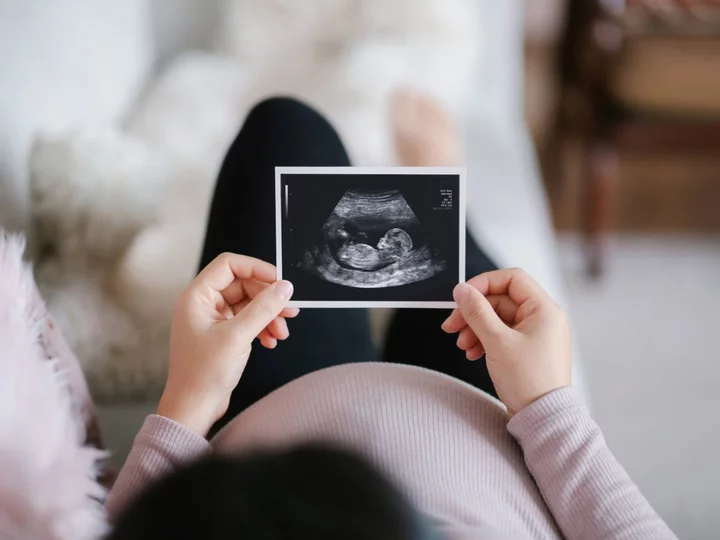
Unborn babies use ‘greedy’ father gene to get more nutrients from mothers, study finds
Unborn babies are in a perpetual nutritional tug-of-war with their mothers due to a “greedy” gene inherited from their fathers, a new study suggests. Scientists from the University of Cambridge have found that foetuses use the gene to “remote-control” their mother into feeding them extra food and control her metabolism. While the mother’s body wants the baby to survive, it needs to keep enough glucose and fats circulating in her system for her own health in order to be able to deliver the child, breastfeed, and reproduce again. Amanda Sferruzzi-Perri, professor in Foetal and Placental Physiology, a Fellow of St John’s College and co-senior author of the paper, said: “It’s the first direct evidence that a gene inherited from the father is signalling to the mother to divert nutrients to the foetus.” Dr Miguel Constancia, MRC investigator based at the Wellcome-MRC Institute of Metabolic Science and co-senior author of the paper, said: “The baby’s remote control system is operated by genes that can be switched on or off depending on whether they are a ‘dad’s’ or ‘mum’s’ gene’, the so-called imprinted genes. “Genes controlled by the father are ‘greedy’ and ‘selfish’ and will tend to manipulate maternal resources for the benefit of the foetuses, so to grow them big and fittest. “Although pregnancy is largely cooperative, there is a big arena for potential conflict between the mother and the baby, with imprinted genes and the placenta thought to play key roles.” The new study looked at how the placenta communicates with the mother through the release of hormones so she can accommodate her baby’s growth. In pregnant mice, scientists selectively altered the signalling cells in the placenta that tell mothers to allocate nutrients to her developing foetuses. The baby’s genes controlled by the father tend to promote foetal growth and those controlled by the mother tend to limit foetal growth, experts say. Professor Sferruzzi-Perri explained: “Those genes from the mother that limit foetal growth are thought to be a mother’s way of ensuring her survival, so she doesn’t have a baby that takes all the nutrients and is too big and challenging to birth. “The mother also has a chance of having subsequent pregnancies potentially with different males in the future to pass on her genes more widely.” In the study researchers deleted the expression of an important gene called Igf2, which provides instructions for making a protein called “Insulin Like Growth Factor Two”. Similar to the hormone insulin, which is responsible for making glucose and controlling its levels in our circulation, the gene promotes foetal growth and plays a key part in the development of tissues including the placenta, liver, and brain. Dr Jorge Lopez-Tello, a lead author of the study based at Cambridge’s department of physiology, development and neuroscience, said: “If the function of Igf2 from the father is switched off in signalling cells, the mother doesn’t make enough amounts of glucose and lipids – fats – available in her circulation. “These nutrients, therefore, reach the foetus in insufficient amounts and the foetus doesn’t grow properly.” The scientists found that deleting the gene also affects production of other hormones that modulate the way the mother’s pancreas produces insulin, and how her liver and other metabolic organs respond. Babies with Igf2 gene defects can be overgrown or growth-stunted. And the researchers say that until now, it was not known that part of the gene’s role is to regulate signalling to the mother to allocate nutrients to the unborn child. The mice studied were smaller at birth and their offspring showed early signs of diabetes and obesity in later life. Professor Sferruzzi-Perri said: “Our research highlights how important the controlled allocation of nutrients to the foetus is for the lifelong health of the offspring, and the direct role the placenta plays. “The placenta is an amazing organ. At the end of pregnancy, the placenta is delivered by the mother, but the memories of how the placenta was functioning leaves a lasting legacy on the way those foetal organs have developed and then how they’re going to function through life.” The findings are published in the Cell Metabolism journal. Reporting by PA Read More It took until my thirties to realise I might not be white Carrie Johnson announces birth of third child with Boris Johnson: ‘Guess which name my husband chose’ How many children does Boris Johnson have? The meaning behind the name of Carrie and Boris Johnson’s third child Emilia Clarke’s brain haemorrhage ‘profoundly changed our lives’, says star’s mother How many children does Boris Johnson have?
2023-07-11 23:21
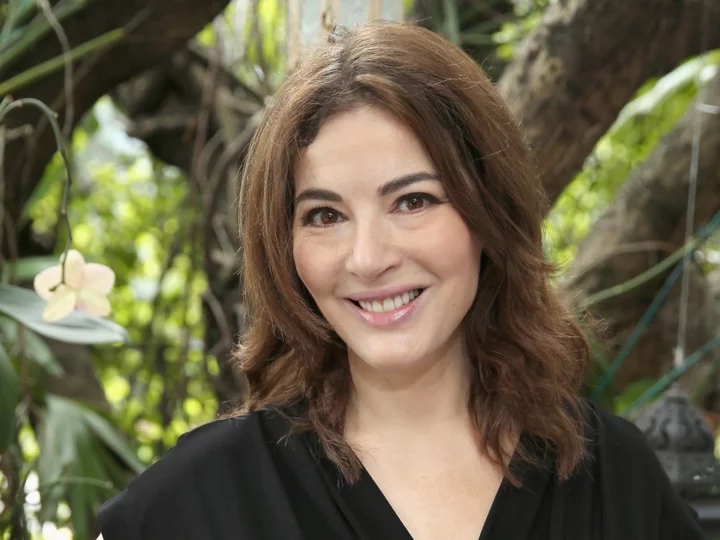
Nigella says extravagant dinner parties are a thing of the past – I wish she was wrong
Oh, to be a guest at a dinner party thrown by Nigella Lawson. It’s the stuff of dreams. On TV, she always made hosting look so effortlessly elegant, passing around plates piled high with luscious-looking food to her laughing guests, fairy lights twinkling above them as though they were ethereal beings blessed by the Domestic Goddess herself. To my teenage self, having a glamorous dinner party was the height of adulthood – Nigella was a huge inspiration. But these days, Nigella says she is less inclined to host a big dinner party – the ones that the public see on her shows like Nigellissima and Nigella Feasts are actually rare. In a new interview with The Times, she revealed that she has fallen “out of the habit” of big gatherings, adding: “I’ll have a person or a couple of people over quite often and I keep planning to have people round in a proper grown-up way but I haven’t yet. I must! I feel a bit guilty because people have had me for dinner and I haven’t had them back.” One could argue that it’s fair for dinner parties to be a thing of the past for Lawson, who has been setting the bar for these things for the past 20 years or so. She can and should do whatever she likes that makes her comfortable. But for me, a woman in her thirties, I still haven’t had the pleasure of planning and throwing a Nigella-level dinner party, and that makes me rather sad. I want to be the hostess with the mostest. I sometimes fantasise about who I’d invite, what I’d cook, what dishes I’d use, what playlist I’d throw on. When I lived in Malaysia, I had a large flat all to myself for just a few months. This period coincided with a New Year’s Eve that, at the last minute, had me throwing a party for everyone who didn’t already have plans. It wasn’t a Nigella-esque party given its eleventh hour nature, but it was perfect for the time – we ordered pizzas and people brought snacks and booze, and we all stayed up late chatting, listening to music, ringing in the new year. What bliss! But modern living quarters have shrunk so much that it makes me claustrophobic just thinking about it. These days, even the idea of a dining room that is separate from the living room feels like a pipe dream for my generation. Entire houses that would have been occupied by one family have been sliced into flats that squeeze multiple households under one roof. The abominable creation of “studio apartments” that force tenants to cook, eat, and sleep in the same space hardly offer the means to have friends over for dinner. Don’t even speak to me about buying a house – I’m just trying to keep my head above water with rent prices, which reached record highs in June. And no, giving up lattes from Pret has not helped one iota. Inflation and wage stagnation have also stamped on my dreams of being a dinner party pro. I’m sorry to be That Person, but have you done a weekly grocery shop recently? I find myself wincing at the checkout more and more with each shop, and I’m only shopping for two. I can’t imagine buying a week’s worth of groceries for a family, let alone a party of more than four. This year, I made a Chinese New Year meal for six people – two of us had to eat on the sofa – and the cost nearly bowled me over. I desperately wanted to do it, but I did not relish looking at my bank balance afterwards. Then there’s the cost of decorations to think about. If TikTok videos are to be believed, decorating is easy as pie, with hundreds of influencers telling you that all you need is a unique table runner; huge bunches of beautiful flowers dotted around; mismatched tableware for a cutesy, vintage feel; tall candles; linen napkins tied up with string. But all of this costs more money than you’d expect, and “hacks” like getting up at 5am to go to Columbia Road Flower Market to get cheaper blooms aren’t all that helpful when work and other commitments demand your time. Of course, where there’s a will, there’s a way. Nigella’s suggestion of serving Twiglets as a starter is unconventional, but fun and cheap; as is her preferred method of making “a big plate of food, taking it out and seeing everyone eat”. Certainly, her latest Ocado recipe for sardine spaghetti – which uses humble tinned sardines in tomato sauce – is cheap, cheerful and entirely delicious, perfectly suited for feeding a large number of people on a budget. This isn’t too surprising: Nigella has always had her finger on the pulse of the public mood, and her other recent Ocado recipes, which feed four people for under £5, will come in handy for many who are struggling. But looking back at the dinner parties she’s hosted on her TV shows, perhaps they weren’t so lavish after all. The immense appeal and pleasure of Nigella’s gatherings has always stemmed from the fact that she cooks what she loves, for people she loves, no matter the number. Her shows, too, made these intimate parties look sparkly and lavish, but underneath all of them lay the bare bones of a great night in: sharing delicious food with wonderful company. I can’t help but grieve for the parties I could’ve had by now. I wish I could fill my home with people without worrying about whether there are enough chairs or if the neighbours above and below me are grinding their teeth, waiting for 10pm to roll around so they can knock on the door and tell us to keep it down. It remains my fervent aspiration, still, to someday throw a Nigella Feasts-worthy dinner party. Until then, I’ll just have to comfort myself with the reminder that even Nigella isn’t up for that these days – and that entertaining for a smaller number of people can be just as satisfying. Read More It took until my thirties to realise I might not be white Solitude used to mean sad singledom. Now it’s become a status symbol I’d waste hours watching ‘What I Eat in a Day’ videos. I can’t believe they’ve made a comeback
2023-07-11 23:16

Frank Alfred Odysseus: The meaning behind the name of Carrie and Boris Johnson’s third child
On Tuesday 11 July, Carrie Johnson announced that she and former prime minister Boris Johnson have welcomed their third child together. Frank Alfred Odysseus Johnson was born on 5 July ay 9.15am, Carrie revealed in an Instagram post before joking: “Can you guess which name my husband chose?” Much has already been made about the choice of names on social media, with people quick to point out that the former PM is a fan of the Greek poet Homer and his epic poem The Odyssey, which tells the story Odysseus. But what does the name – and the child’s other names – actually mean? Odysseus takes its moniker from Homer’s poem, which follows the legendary king of the island of Ithaca on his , who is returning home at the end of the 10-year Trojan War. His journey takes an additional 10 years, during which his crewmates perish and he must face a number of threats. In the poem, which covers a decade-long journey, Odysseus is portrayed as exceptionally intelligent and courageous. He is one of the most influential Greek mythology heroes and the name is often associated with wisdom, pride, and heroism. As for the newborn’s first and second names, Frank comes from the Medieval Latin term, “Francus”, which means “free, at liberty, and exempt from service”, according to etymonline.com. It’s also thought to be connected to the Old French word, “franc”, which, similarly, means “not servile”, with other associations including sincere, genuine, open, gracious, generous, worthy, noble, and illustrious. However, Merriam-Webster claims that the name Frank itself comes from the Franks, “a West Germanic people who lived long ago”. The dictionary continues: “In the early Middle Ages the Franks were in power in France. (It was from them that the country got its name, in Latin Francia.) “The Franks eventually merged with the earlier Gaulish and Roman inhabitants, and their name (Francus in Latin) lost its ethnic sense and referred to any inhabitant of Francia who was free, that is, not a slave or bondman.” As for Alfred, the name is believed to mean “elf counsel” and is derived from the Old English name, Ælfræd. It’s a name often associated with wisdom and is most commonly associated with famous Alfreds, including the ninth-century king, Alfred the Great, filmmaker Alfred Hitchcock, and the poet Lord Alfred Tennyson. In 2019, the former PM was accused of misquoting Lord Tennyson while discussing Brexit, pledgingthat Britain would leave the EU on 31 October “do or die, come what may”. The phrase is often linked to Tennyson’s poem, The Charge of the Light Brigade, except the quote is, “Theirs not to reason why, theirs but to do and die”. Read More Carrie Johnson announces birth of third child with Boris Johnson: ‘Guess which name my husband chose’ How many children does Boris Johnson have? Buckingham Palace responds to Joe Biden’s ‘protocol breach’ with King Charles Rishi Sunak to meet King Charles as Truss defends her record - live Johnson was ‘begging people for votes’ in a ‘demeaning’ way, says IDS Welcome, PM Sunak – the last best option to take over from Truss
2023-07-11 22:54

Emilia Clarke’s brain haemorrhage ‘profoundly changed our lives’, says star’s mother
Emilia Clarke’s mother has described how her daughter’s brain haemorrhage changed the Clarke family “in an instant”. Emilia, who played Daenerys Targaryen on Game Of Thrones, and her mother set up a brain injury charity after the star survived two life-threatening brain conditions while she was filming the hit TV show. Jenny Clarke said it feels like her daughter’s brain haemorrhage – a bleed on the brain – “feels like yesterday” even though it was more than a decade ago. The incident, which took place when Emilia was working out in a north London gym in 2011, was “completely out of the blue”, Jenny said. She said her daughter fought to stay conscious even though she was in “the worst pain she could ever imagine”. Emilia, now aged 36, was taken to a hospital in London but medics did not immediately spot that she had suffered a brain haemorrhage and it took “a long time” before she was sent to a specialist hospital where she received life-saving care, Jenny told the PA news agency. Jenny said there needs to be more awareness among medics about brain haemorrhages in young people because the condition is traditionally seen as something that happens to older people. Emilia also had to have a second procedure in 2013 where surgeons in New York had to remove a brain aneurysm which was found through routine check-ups. The Me Before You star and her mother have since set up the charity SameYou which is working to develop better recovery treatment for survivors of brain injury and stroke. Jenny, who is chief executive of the charity, said that rehabilitation after brain injury is “undervalued and under-prioritised” and should be a “key component of universal health coverage”. She said that while people with serious side effects of brain injury – such as mobility or speech and language problems – do get support, there is often little or no help for people who suffer mild to moderate problems. Jenny told PA: “It feels like yesterday to us really, because it was just such a profound shock. “She had just started Game Of Thrones, the first season had been filmed and she had just come back from a press tour. “And then she had her first brain haemorrhage which was completely out of the blue – it was a morning in March and she was in the gym and she suddenly felt this terrible pain in her head – she’s been quoted as saying it was the worst pain she could ever imagine. “She also realised that something was seriously wrong with her because the pain was so intense. “So she did her best, as she was lying semi-unconscious on the floor of the gym, to try and make sure she kept a sense of what was around her and she fought to make sure that she didn’t lose consciousness.” Jenny added: “When she was rushed to a hospital in London, it was very difficult to establish what has happened to her – and that’s also something that we think is very important; maybe there isn’t enough specialist information and training to actually recognise what happens when you have a brain haemorrhage when you’re young. “People expect people to have strokes and brain haemorrhages when they’re older, it’s a problem of older age, but Emilia was 23 when she had her first brain haemorrhage, so people didn’t recognise it as a brain haemorrhage. “So it took a long time before she was admitted to the wonderful Queen Square (the National Hospital for Neurology and Neurosurgery), which is part of University College London Hospitals and literally her life was saved because of an intervention to stop the bleeding. “But it was three weeks in hospital before we knew whether she was going to have another stroke, and whether she would have different health problems as a result of the brain haemorrhage.” Jenny continued: “When it comes completely out of the blue, your life is just changed in an instant. And I must say that our lives have been continuously changed because of it.” After describing the second “open head surgery” in the US, Jenny said: “Those two great big shocks really have profoundly changed all of us as a family.” The comments come as Jenny attended the launch of the World Health Organisation’s (WHO) Rehabilitation Alliance in Geneva – a coalition which is calling on countries to do more for people in need of rehabilitation services. Jenny delivered a speech to the WHO about the power of advocacy, saying: “There is huge power if survivors come together with one voice to demand that integrated rehabilitation is moved up the agenda. “One in three people will experience a brain injury. They are the most powerful advocates – and this meeting is calling for their needs to be heard and action to be taken.” On rehabilitation for brain injury survivors, she told PA: “As a young person… when something like this happens, you absolutely must have as much support as possible and it just doesn’t really exist. “If you have severe consequences of brain injury, of course, there are many places helping people if you’ve got strong long-term, serious conditions, but what we found was, is that you can have mild to moderate brain injury – and that means you don’t have any necessarily physical issues; you don’t have necessarily any speech and language difficulties, but you do always have the trauma that you’ve had the problem – and there is a just a huge lack of awareness that this is important enough to put resources to get it treated.” She added: “Rehabilitation is undervalued and under-prioritised and that’s clearly got to change as a key component of universal health coverage. “It was such a shock when it happened to us, when Emilia had her brain injury. “We’ve had thousands of people write to us, and so it’s not just our own lived experience, there’s just not enough provision, not enough services available. “There is a great unmet need and a gap in service provision after you’ve survived a brain injury, and you’re trying to rebuild your life, particularly if you’re a young adult. “And what we are advocating for is there needs to be a lot more information given to survivors of brain injury, about what’s happened to them and their opportunity to get recovery services. “There is a gap between what survivors and their families say they need and want and what is currently available in many developed countries.” Read More It took until my thirties to realise I might not be white Carrie Johnson announces birth of third child with Boris Johnson: ‘Guess which name my husband chose’ Buckingham Palace responds to Joe Biden’s ‘protocol breach’ with King Charles Charity boss speaks out over ‘traumatic’ encounter with royal aide Ukraine war’s heaviest fight rages in east - follow live
2023-07-11 22:28
